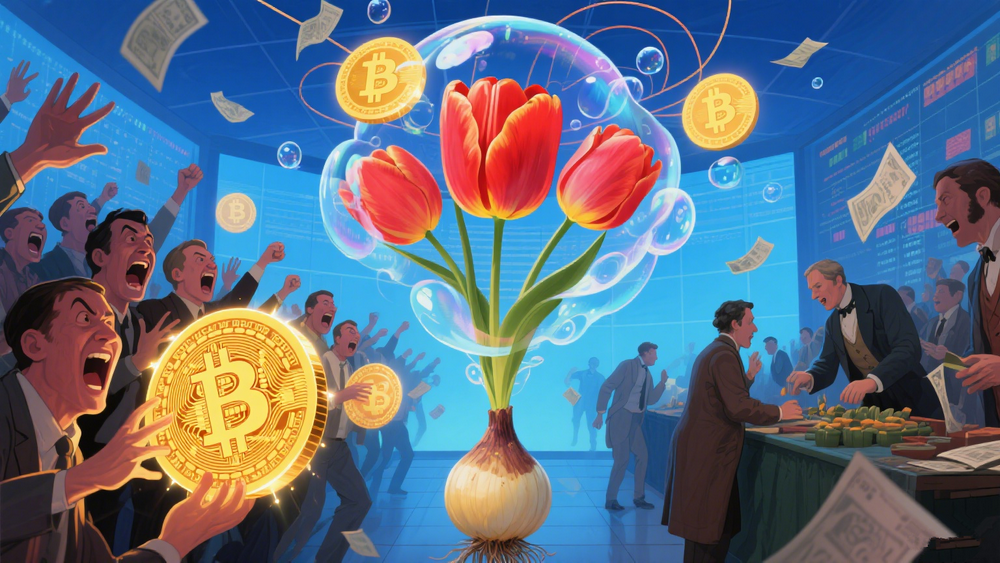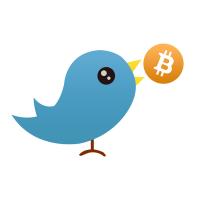Source: unlock-bc
Translated by: BlockWeeks
Original Title: From the Tulip Bubble to the Bitcoin Craze: A Historical Speculative Mirror
In the Netherlands of the 17th century, a flower sparked the first documented financial bubble - the Tulip Bubble.
This trend, initially symbolizing beauty and status, quickly evolved into a speculative frenzy that ultimately left countless people financially ruined.
Centuries later, with Bitcoin soaring above $120,000, people are once again prompted to draw comparisons. A report by Al Arabiya explored the similarities between tulips and tokens, reminding everyone to be cautious - not because "Bitcoin is definitely a bubble", but because human speculative behavior tends to repeat itself.

How a Flower Became Wealth
Tulips were introduced to Europe from the Ottoman Empire in the mid-16th century and soon became a must-have for Dutch nobility. They were vibrant and rare, symbolizing wealth and taste.
By the early 17th century, tulips had transformed from decorative plants to speculative assets. From merchants to craftsmen, and even ordinary workers, everyone began trading "tulip bulb futures", with most people never having seen an actual bulb.
At the peak of the frenzy in 1636, the price of a rare tulip was equivalent to a mansion in Amsterdam. Buyers were no longer paying for the flower itself, but betting that someone would pay an even higher price the next day.
However, in February 1637, it suddenly collapsed: demand vanished, auctions fell silent, and prices plummeted. Prosperity disappeared overnight, with many fortunes turning to dust, and the Tulip Bubble became a classic cautionary tale about speculation.
Bitcoin: The "Tulip" of the 21st Century?
Fast forward to today, Bitcoin has once again defied imagination, with a market value exceeding $2.4 trillion, surpassing Amazon and silver, ranking as the fifth-largest global asset.
So, is it repeating the "Tulip Bubble"?
**Not entirely the same.** Tulips were ultimately decorative plants, while Bitcoin carries transformative potential. Based on blockchain technology, it builds a decentralized monetary system - a transparent and immutable ledger supporting peer-to-peer payments; it serves as both a store of value and can be used for cross-border remittances, even combating inflation.
But the speculative mindset is similar: many investors buy in not because they understand the technology or value, but out of FOMO (fear of missing out), hoping for quick profits. Social media has replaced 17th-century taverns, with rumors and price predictions spreading wildly, encouraging blind following.
How Bitcoin Breaks the Mold
The key difference is that Bitcoin is not a beautiful rare flower, but "programmable money".
Supported by blockchain technology:
Trustless, cross-border payments
Smart contracts
Decentralized applications
Institutional investors have begun positioning: hedge funds, asset management companies, and even some central banks are incorporating BTC into their reserves. While Bitcoin's volatility is significant, it follows the typical technology and financial innovation lifecycle of "excitement → overheating → correction → integration".
Lessons from the Past, Warnings of the Present
The Tulip Bubble is not just a piece of history, but a mirror reflecting human greed and fear, reminding us how easily rational decision-making can be blinded by the "get-rich-quick" dream.
Bitcoin may be the "flower" of the digital age, but it's also a test of how we approach disruptive technology. The challenge is not to dismiss every bull market with "bubble theory", but to combine passion with understanding.
At the threshold of the decentralized era, one thing remains unchanged: **the market is equally driven by emotions. The greed, fear, and hope that fueled the Tulip Bubble centuries ago are still playing out in the Bitcoin market today.
Bitcoin may not be a bubble, but it's not invincible either - and that is the most valuable lesson of history.





